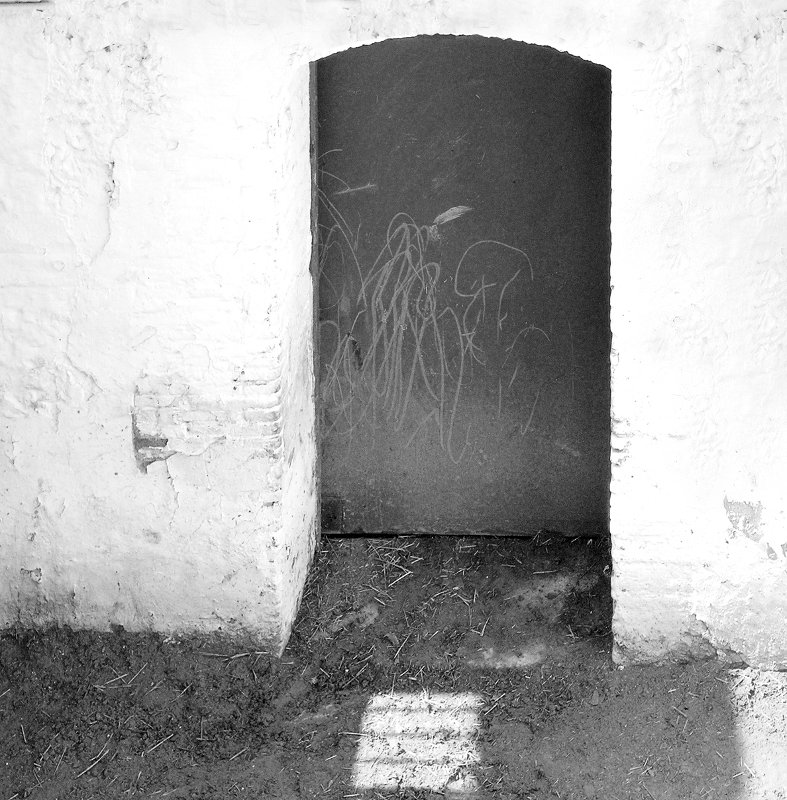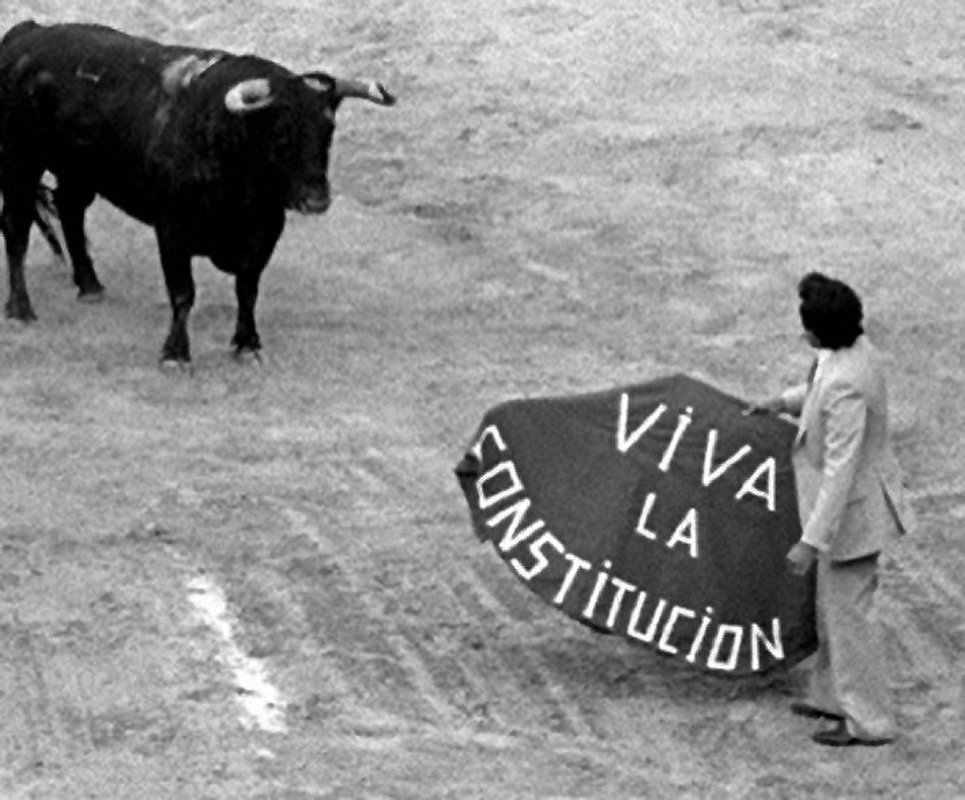Detrás de la plaza de toros hay una puerta metálica pintada de rojo, a través de la cual los toros entran los corrales después de haber sido descargado del camión que los trajo desde sus dehesas al coso. No hace mucho tiempo que la puerta estaba cubierta por un extraño patrón de rayas. Me recordaban a las señales que aparecieron en la puerta de la casa de mi abuelo, hace muchos años. Cuando quise saber de ellos, dijo que fueron hechas por los viajeros que llegaron a la puerta pidiendo comida o dinero, un código para comunicarse entre sí y cuya significación era conocida sólo por ellos. Pero un día le pidió a uno de sus visitantes que le explicara lo que significaban aquellos símbolos, y se enteró de que el signo de la puerta significaba ‘Aquí vive un hombre generoso’ (lo que explicaba por qué mi abuelo tenía tantos visitantes). Otros podrían ser menos simpáticos: ‘Ama de casa tacaña’, o se instó al viajero a no llamar debido a un ‘¡Perro Feroz!’
De repente se me ocurrió, en relación a las marcas en la puerta de los corrales, que podría ser que los toros de lidia, antes de entrar, habían arañado en la pintura con sus cuernos, en un idioma sólo conocido por ellos. ¿Eran mensajes secretos para los futuros toros que traerían a la plaza? ¿Sabían lo que había detrás de esta puerta roja y dejaron estas señales destinadas a advertir a otros para que se mantuviesen lejos de este lugar? ‘¡Una vez pasada por esta puerta, ya no hay vuelta atrás!’ Detrás de esta puerta ningún hombre generoso les esperaba, dijeron, ni siquiera una mísera ama de casa o un perro feroz. En las antiguas palabras de La Divina Comedia de Dante, éstas marcas significaban: ‘¡Abandona toda esperanza, tú que entras aquí!’
Despertando de mi fantasía, un lote de toros fue descargado y cada uno de ellos llegó a la puerta roja. Aunque se detuvieron en las mar-‐cas rascadas, ni uno de ellos se dio la vuelta.
Prometía ser una corrida espléndida.
Taurine Typography
Behind the plaza de toros is a red painted metal gate through which bulls enter the pens after being unloaded from the truck that takes them from their pasture to the arena. Not too long ago that door was covered in a strange pattern of scratches. They reminded me of the signs that kept appearing at my grandfather's gate, many years ago. When I wanted to know about them, he said that by these markings, travelers who came to the door begging for food or money, communicated with each other and that their meaning was only known to them. But one day he had asked one of his visitors and learned that the sign at his gate meant: ‘Here lives a generous man’ (which explained why my grandfather had so many callers). Others could be less sympathetic: ‘Miserly housewife’ one would say, or it warned the traveler not to call at a house because of a ‘Fierce dog!’
Looking at the markings on the arena door, it suddenly struck me, could fighting bulls, before entering, have scratched these in the red paint with their horns, in a language only known to them? Were they secret messages for the next bulls brought to the arena? Did they know what lay behind this red gate and by leaving these signs mean to warn others to keep away from this place? ‘Once you pass this point, there is no turning back!’ Behind this door no generous man awaited them, they said, not even a miserly housewife or a fierce dog.
In the ancient words of Dante’s Divine Comedy these markings meant: ‘Ye who pass here, abandon all hope!’
As I awoke from my daydream, a group of toros was unloaded and each one came to the red door. Although they stopped at the markings, not one of them turned around.
It promised to be a splendid corrida.

Puerta. Foto: Pieter Hildering

Emilio Muñoz. Screenimage (TVE)

1981. www.artetaurino.com

Toro de fuego. Foto: Alberto de Jesus
 terug naar Tipografía Taurina
terug naar Tipografía Taurina bestel het boek bij de auteur via dit bestelformulier / order your copy
bestel het boek bij de auteur via dit bestelformulier / order your copy